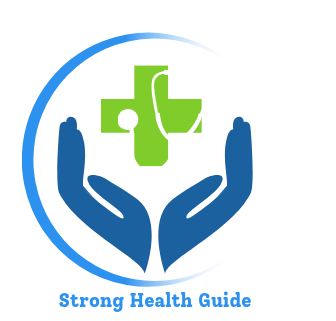Creating a sustainable and healthy exercise routine is key to living a fit and balanced life. However, with so much information out there about fitness trends and workouts, it can be difficult to figure out where to begin and how to stick with a plan that works for you. Whether you’re just starting your fitness journey or looking to optimize your existing routine, it’s important to craft a plan that aligns with your goals, abilities, and lifestyle.

1. Set Clear and Attainable Goals
The foundation of any successful exercise routine begins with setting specific, measurable, achievable, relevant, and time-bound (SMART) goals. These goals will serve as the guiding force behind your workouts, keeping you focused and accountable.
Short-term and long-term goals:
- Short-term goals might include running for 20 minutes without stopping, doing a full set of push-ups, or attending three workout sessions a week.
- Long-term goals can range from losing a certain amount of weight, building muscle, improving cardiovascular health, or training for an event like a 5K.
It’s important to start small and gradually increase the intensity and frequency of your workouts as you make progress. Setting realistic goals can prevent burnout and help you celebrate your achievements along the way.
2. Find a Routine That Suits Your Lifestyle
Consistency is key when it comes to fitness. The best workout routine is one that fits seamlessly into your daily schedule and aligns with your personal preferences. Whether you prefer early-morning workouts or after-work sessions, finding the right time to exercise increases the likelihood of sticking with it in the long run.
Types of exercise routines to consider:
- Cardio-based routines (e.g., running, cycling, swimming) are great for improving heart health and burning calories.
- Strength training routines (e.g., lifting weights, using resistance bands, or bodyweight exercises) help build muscle and improve metabolism.
- Flexibility and mobility routines (e.g., yoga, Pilates, stretching) are ideal for increasing range of motion, reducing injury risk, and improving overall balance.
- High-Intensity Interval Training (HIIT) is a popular option for those looking to maximize results in a short period. HIIT involves alternating between short bursts of intense exercise and periods of rest.
3. Balance Cardio, Strength, and Flexibility
For a well-rounded fitness routine, it’s important to incorporate a balance of cardio, strength training, and flexibility exercises. Each component plays a unique role in improving overall health and fitness.
Cardio: Cardiovascular exercises, like running, cycling, or brisk walking, elevate your heart rate and improve cardiovascular health, endurance, and calorie burn.
Strength training: Incorporating strength training into your routine helps build and maintain muscle mass, which in turn boosts metabolism. It also enhances bone density and joint stability, lowering the risk of injury.
Flexibility and mobility: Regularly stretching or practicing yoga helps prevent muscle tightness and improves mobility. Flexibility training should be part of your warm-up and cool-down routine, reducing the risk of injury and enhancing recovery.
A balanced weekly routine might look something like this:
- Cardio: 3-4 days a week
- Strength training: 2-3 days a week
- Flexibility: 2-3 days a week or integrated into each session
4. Progressive Overload for Continuous Improvement
Once you have established a routine, it’s crucial to follow the principle of progressive overload—gradually increasing the intensity, volume, or difficulty of your workouts over time. This is how you’ll continue to challenge your body and avoid plateaus.
You can apply progressive overload by:
- Increasing the weight or resistance used in strength training.
- Adding more reps or sets to your workouts.
- Increasing the duration or intensity of cardio sessions.
- Trying new exercises or workout formats to challenge different muscle groups.
By gradually pushing your limits, you’ll continue to see improvements in strength, endurance, and overall fitness.
5. Listen to Your Body and Prioritize Recovery
As much as exercise is important, so is recovery. Overtraining can lead to injury, burnout, and even reverse the progress you’ve made. Prioritizing rest days and recovery methods such as stretching, foam rolling, or even getting enough sleep ensures your body has the time it needs to rebuild and grow stronger.
Active recovery days can include low-intensity activities like walking, yoga, or swimming. These help keep your body moving while giving your muscles time to repair.
6. Stay Motivated with Variety
One of the biggest challenges in maintaining a fitness routine is staying motivated. Sticking to the same workout every day can become monotonous, leading to boredom and a drop in motivation.
To keep things exciting:
- Change up your workouts: Rotate between different forms of exercise, such as cardio, strength training, and flexibility workouts.
- Set new challenges: Try new fitness activities, such as rock climbing, paddleboarding, or dance classes, to engage different muscles and keep workouts fresh.
- Join a fitness community: Group classes, online fitness challenges, or working out with a partner can help keep you accountable and motivated.
7. Fuel Your Body with Proper Nutrition
Exercise and nutrition go hand-in-hand when crafting a fit lifestyle. To get the most out of your workouts, it’s important to fuel your body with the right foods.
- Protein: Essential for muscle repair and growth, protein should be a cornerstone of your diet, especially after strength training.
- Carbohydrates: These are your body’s main source of energy, especially for endurance exercises. Choose complex carbs such as whole grains, fruits, and vegetables.
- Healthy fats: Fats support cell function and the absorption of vitamins. Incorporate sources of healthy fats such as avocados, nuts, and olive oil into your meals.
- Hydration: Staying hydrated is crucial for optimal performance. Water helps regulate body temperature, transport nutrients, and lubricate joints. Aim to drink water consistently throughout the day, and increase your intake during and after exercise.
8. Track Your Progress
Tracking your fitness journey can be a powerful motivator and help you stay accountable. Keep a workout journal or use a fitness app to log your exercises, track your weight or reps, and note how your body feels after each session.
Tracking your progress allows you to:
- Identify areas of improvement.
- Adjust your goals or routine based on your progress.
- Celebrate milestones and achievements, whether it’s lifting heavier weights, running faster, or simply feeling more energetic.
Conclusion
Crafting a fit lifestyle and developing a sustainable exercise routine is a personal journey that requires patience, consistency, and commitment. By setting clear goals, balancing different types of exercises, incorporating progressive overload, and staying motivated with variety, you’ll be well on your way to a healthier and more active life. Remember that fitness is a lifelong journey, and building a routine that works for you will ultimately help you maintain both physical and mental well-being over the long term.
